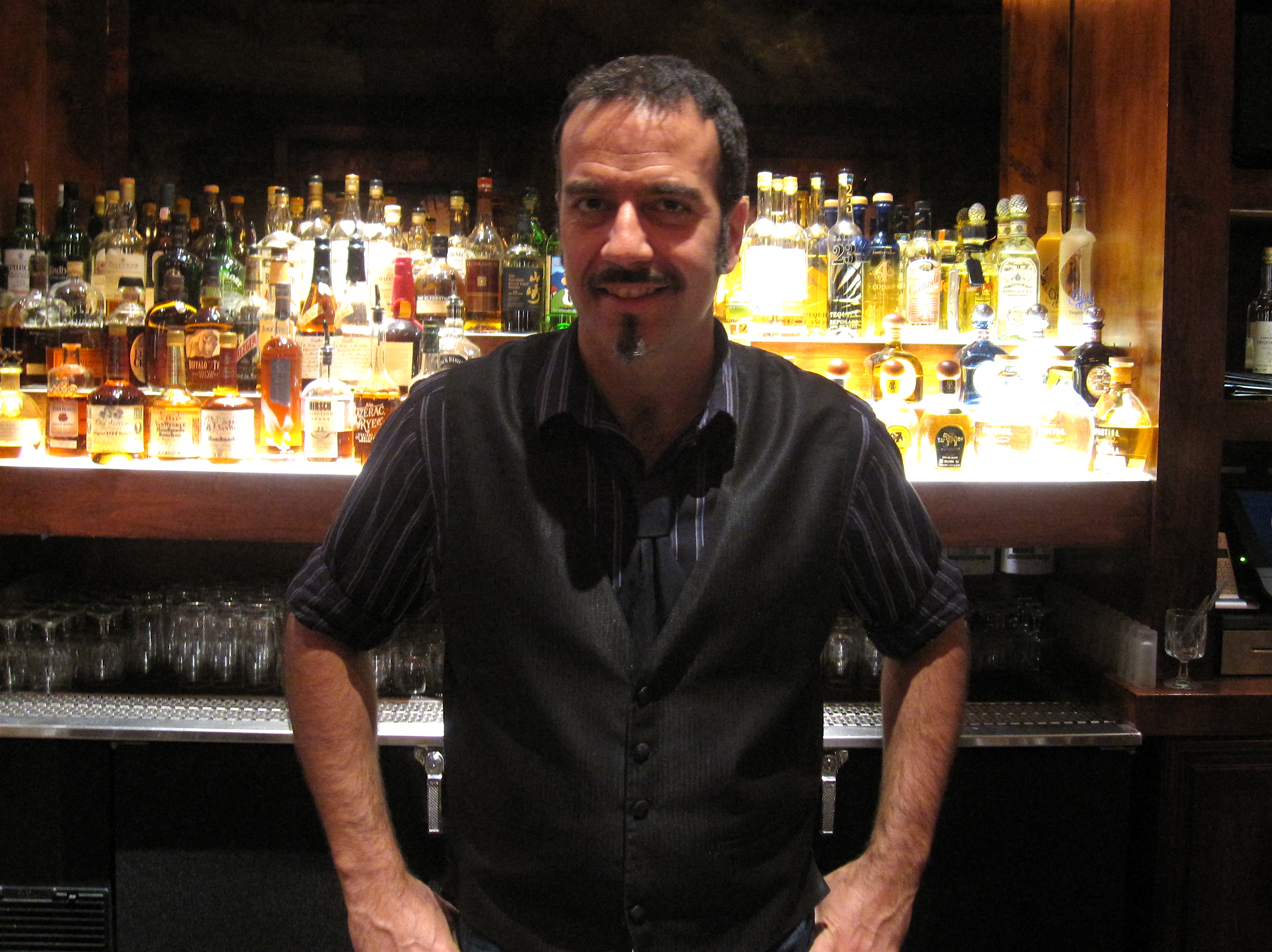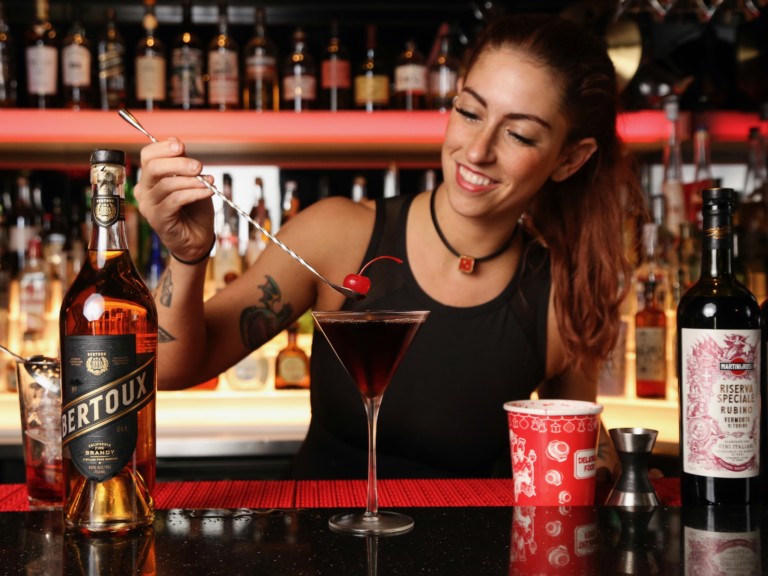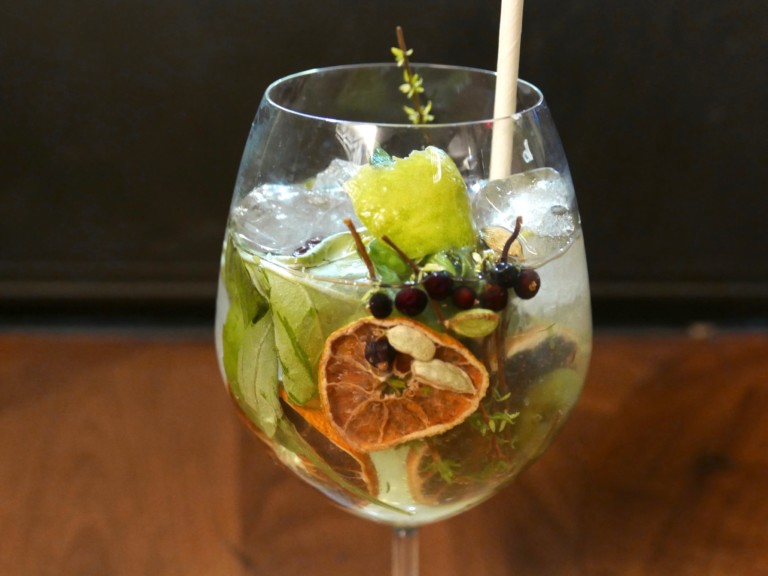When Vincenzo Marianella isn’t behind the bar at Copa d’Oro – which isn’t very often – you’ll find him exploring Los Angeles on his motorcycle. The native Italian built the bar program at Providence and launched a cocktail consulting company called MyMixology before teaming with Jonathan Chu on Copa, which occupies the forefront of the Westside cocktail scene. He recently sat down at the Santa Monica bar to discuss his background and approach, which centers on balanced, market-fresh cocktails.
Do you consider yourself a bartender or a mixologist?
When I’m consulting, it’s mixology. When I’m behind the bar, I’d go with bartender. There’s so much you learn as a bartender and so much that you learn as a mixologist that I’m caught between the two right now. It doesn’t really matter to me, as long as I do my best and I get people happy.
What’s the difference?
Bartenders need customer skills and customer service. You work behind the bar and don’t have good mixology skills, as long as you have good whiskey and good tequila, they’re waiting for you as long as the bartender makes people comfortable. If you have a great mixologist but he’s an asshole and the vibe is not that nice, you won’t go to that bar. In mixology, we need someone confident who knows what he’s talking about. That’s the main difference. Mixology, you can be behind the bar for a year and turn into a mixologist. To become a bartender takes longer, comes from experience.
How did you become so interested in cocktails?
When I moved to London, I realized the potential. I liked drinking them.
What was your first bar job?
My first bar job was at an Italian restaurant that doesn’t exist anymore called Bistro Italia. Now it’s Porterhouse Bistro.
In Beverly Hills?
Yeah, in Beverly Hills. That was more than 10 years ago.
What brought you to Los Angeles?
Curiosity. I was supposed to be here for six months, ten years ago. I was curious in traveling, good weather and learning English.
When did you know that you’d be involved in cocktails for a living?
Probably 2003, when I moved to London, I said that’s going to be a career. At a cocktail lounge, hotel lounge in Europe, it’s different than here. They have more respect. They’re considered professionals behind the bar. In a city like L.A., it’s a secondary job where most people hate doing it, which is pretty sad, but that’s what it is. In London, I decided I wanted to be behind bars.
Where were you working in London?
Smollensky’s on the Strand, right near The Savoy. Then I worked in this club called AKA, which I found out just a month ago that they had to shut it down.
Were you sad to hear that?
Yeah, it was a great bar. It was a club, and they had 70 cocktails on the menu. They had fresh lemon, fresh lime, everything was fresh ingredients. If a place like that can handle 6 or 700 people at any time, I can’t see why regular bars can’t be at that level.
What was the progression?
I worked at Amalfi and Valentino, six months, six months, and then Providence, two and a half years. I helped open the Sidebar at the Beverly Wilshire Hotel. Then in 2005, I started my consulting company, working at Providence, working at Doheny, and then Copa d’Oro. I did a lot of consulting at different places. Last year, I opened eight places.
Would you say that you have any cocktail mentors?
Absolutely. I have a few of them. For mixology knowledge and probably class and style, it’s Francesco Lafranconi. He’s in Vegas, a master mixologist for Southern Wine & Spirits. As a bartender, barkeeper, and for his customer skills, there’s nobody better than Julio Bermejo in San Francisco, at Tommy’s. A combination of the two of them is probably Salvatore Calabrese in London, which is very good as a mixologist, but also as a host. Those are my three mentors, but mainly Francesco.
What’s a great simple cocktail for people to make at home?
Tommy’s Margarita. Two ounces of tequila, one ounce of (agave syrup 1/2 agave half water or 2 bar-spoon of agave nectar) and one ounce of fresh lime juice.
Any type of tequila in particular?
100% agave tequila, no Patron. I probably would say Partida, Calle 23 or El Tesoro, just to cover the areas in Jalisco for tequila.
Who are some other bartenders in town that you respect?
Oh, millions of them. Marcos Tello, Eric Alperin, Damian Windsor, all the guys at the Varnish, all the bartenders at the Roger Room, the two guys at La Piazza who have different type of skills. My guys here. Just name them. Whoever does a good job and does it for passion, I respect them.
If you could only drink one more cocktail, what would it be?
What’s it called those boats that move petrol in the ocean?
A tanker.
Yeah. A tanker of Tommy’s Margarita.
What makes it so special?
It’s simple, it’d delicious. I didn’t think it was possible to make a new classic and improve a classic. I can drink ten of them. I get sick of the same cocktail after three times, but I never get sick of Tommy’s Margarita. I get a pitcher every time I go to San Francisco.
What’s the most recent cocktail that you developed and what was your approach?
The last one that I’m very happy about was the Custer cocktail. It’s two ounces of rye whiskey, one ounce of Galliano original, a third of an ounce of Cynar, a dash of celery bitter and a dash of rhubarb bitter. I named that cocktail after a regular that used to come here. He’s the first one who ever tried it. He asked for an aromatic style of cocktail and I made it and he loved it and had four or five of them, him and his friend. Unfortunately I found out that he passed away, so I named it for him. Tom Custer.









Blog Comments
Perry Peck
November 21, 2009 at 6:04 AM
How interesting to see how a real bartender thinks about their art.